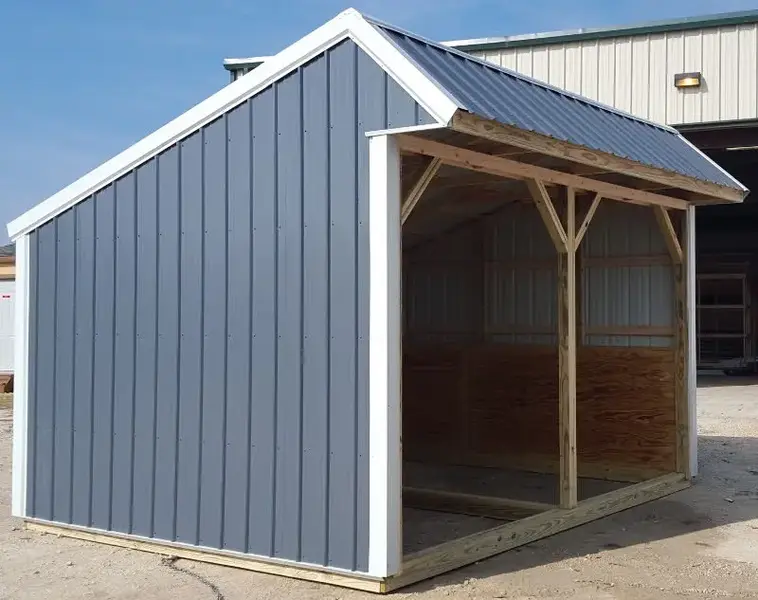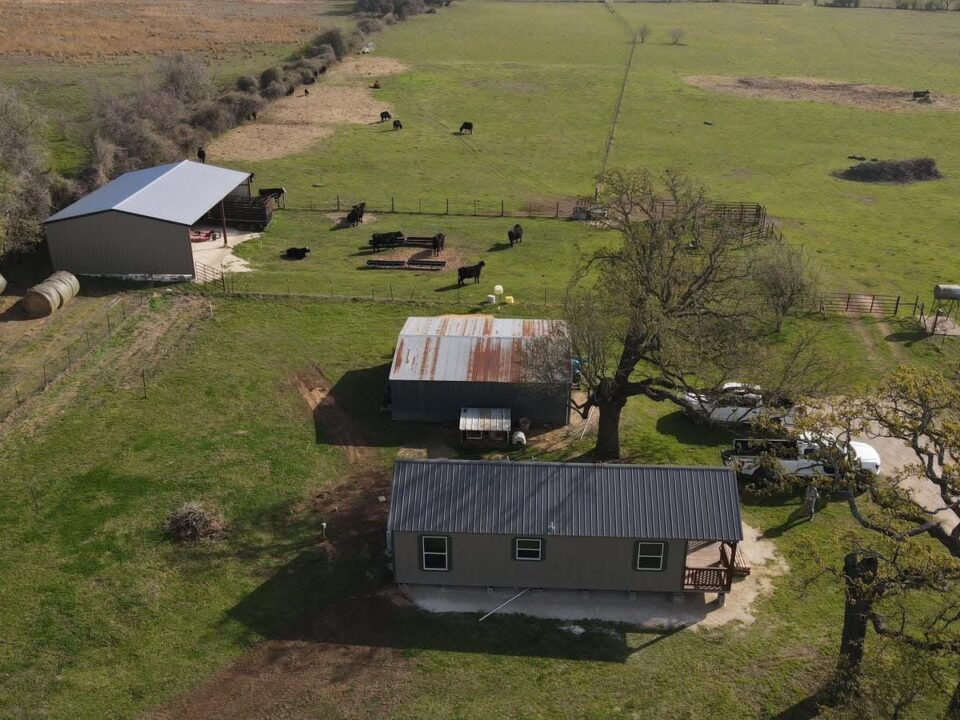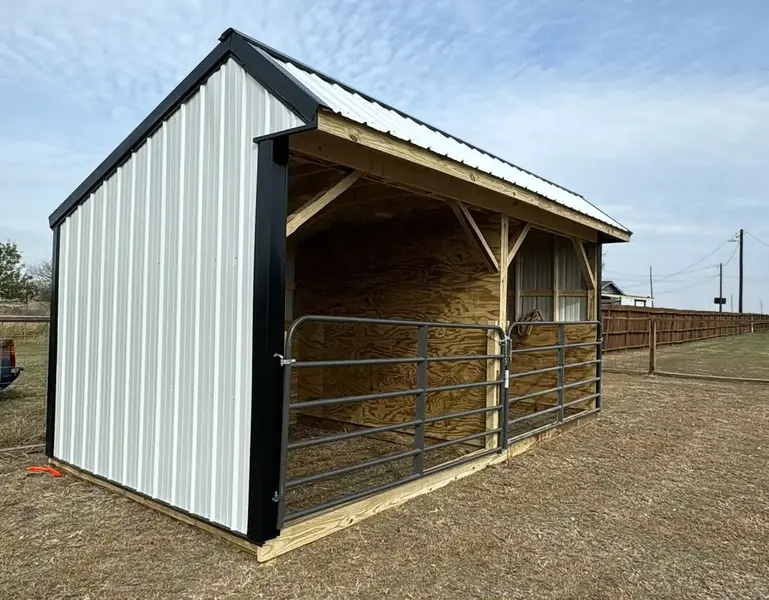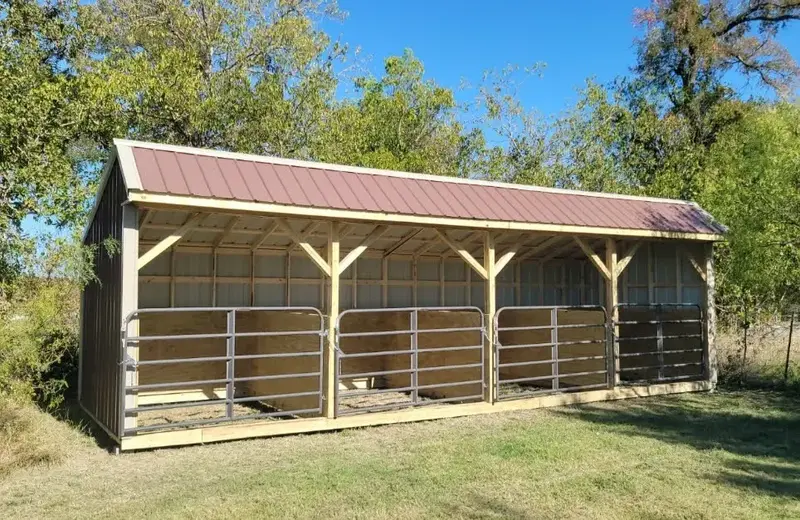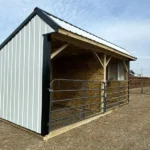
Predator-Proof Animal Shelter | 2025 Safety Upgrades
July 1, 2025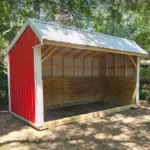
Loafing Shed vs Barn | Animal Shelter Comparison 2025
July 3, 2025🌬️ Animal Shelter Ventilation: Creating Comfort in Every Season
When it comes to building an animal shelter, most people focus on size, durability, and predator protection. But there’s another factor just as essential—ventilation. Without fresh airflow, your animals can suffer from heat stress, respiratory issues, and dangerous moisture buildup. And in 2025, with rising temperatures across the South, animal shelter ventilation isn’t optional—it’s critical.
Let’s break down why ventilation matters, how to design it well, and which upgrades will keep your animals safe and comfortable all year long.
🐄 Why Animal Shelter Ventilation Is Non-Negotiable
Animals need air movement just as much as humans do. In enclosed spaces, warm air rises, moisture gathers, and ammonia from waste can create harmful fumes. Without proper ventilation, this buildup leads to health problems and discomfort, especially for livestock like goats, horses, chickens, and dogs.
Good ventilation reduces humidity, regulates temperature, and minimizes odor. It also helps dry out bedding, reduces bacteria, and discourages mold or fly infestations. And when the seasons shift—cold winters or scorching summers—a well-ventilated shelter adapts, keeping your animals healthier and calmer.
☀️ Passive Ventilation: Simple, Smart, and Effective
Passive ventilation is the most common system in animal shelters—and it works when done right. This means allowing airflow to naturally move through the structure using vent placements, window orientation, and ceiling height.
A popular method includes installing vents at the lower wall level for cool air intake, and vents near the roof for warm air release. This natural circulation helps maintain a steady environment without mechanical systems. Tall ceilings or roof peaks, especially in loafing sheds or barns, improve air movement and comfort for large animals.
Doors and windows can also aid airflow. Just be sure they’re screened or covered with hardware cloth to keep pests and predators out while letting air in.
💨 Mechanical Airflow: When to Add Fans or Vents
In hot, humid regions—or enclosed shelters with limited space—mechanical ventilation may be necessary. Exhaust fans, solar-powered roof vents, or wall-mounted intake units move air more efficiently and help control moisture year-round.
Fans are especially helpful in dog kennels or compact barns where natural airflow struggles to reach every corner. They also reduce odors and keep bedding materials drier, extending their lifespan and lowering maintenance.
At Wolf Valley Buildings, we offer pre-wired shelter models that make installing fans and lights easy. If you’re raising animals in Texas heat, we highly recommend this feature.
🧊 Summer Cooling & Winter Circulation
Ventilation isn’t just about cooling—it’s about climate balance. In summer, it removes excess heat and brings in fresh air. In winter, it prevents moisture and condensation that can freeze, cause rot, or make animals sick.
To make ventilation work in all seasons, consider adjustable louvers or vent covers that allow you to fine-tune airflow. Insulating the roof and upper walls can also help maintain a stable temperature, preventing cold drafts while still allowing moisture to escape.
Adding windows with operable sashes provides flexibility. You can open them for airflow on warm days and close them during storms or frigid spells.
🧱 Material Matters: Build for Breathability
The materials you choose affect how your shelter breathes. Metal roofs with reflective coatings reduce heat absorption. Treated wood siding paired with breathable barriers (like mesh or vents) promotes circulation while staying predator-proof.
For interior walls, avoid sealing the structure too tightly. It’s tempting to block out all airflow for warmth, but your animals still need oxygen and moisture control. Using vapor-permeable wraps or gapped paneling can help maintain airflow while keeping the elements out.
🔗 Internal & External Resources
Need more tips on smart shelter design? Check out Predator-Proof Animal Shelters, Loafing Sheds vs. Barns, and All-Weather Animal Shelters for Year-Round Protection, Loafing Sheds for Goats, Sheep & Livestock | Wolf Valley Buildings
For additional ventilation insights, explore Purdue Extension’s Guide to Livestock Ventilation.
🐐 Let Your Animals Breathe Easy
Shelters aren’t just about walls and roofs—they’re about wellbeing. Good air makes for healthier animals, cleaner bedding, and lower long-term costs. Whether you’re housing goats, chickens, dogs, or horses, the right ventilation system brings peace of mind in every season.
👉 Build a better shelter with Wolf Valley Buildings. Contact us today to design a custom animal shelter that breathes with your herd.

